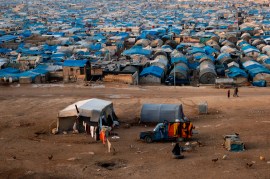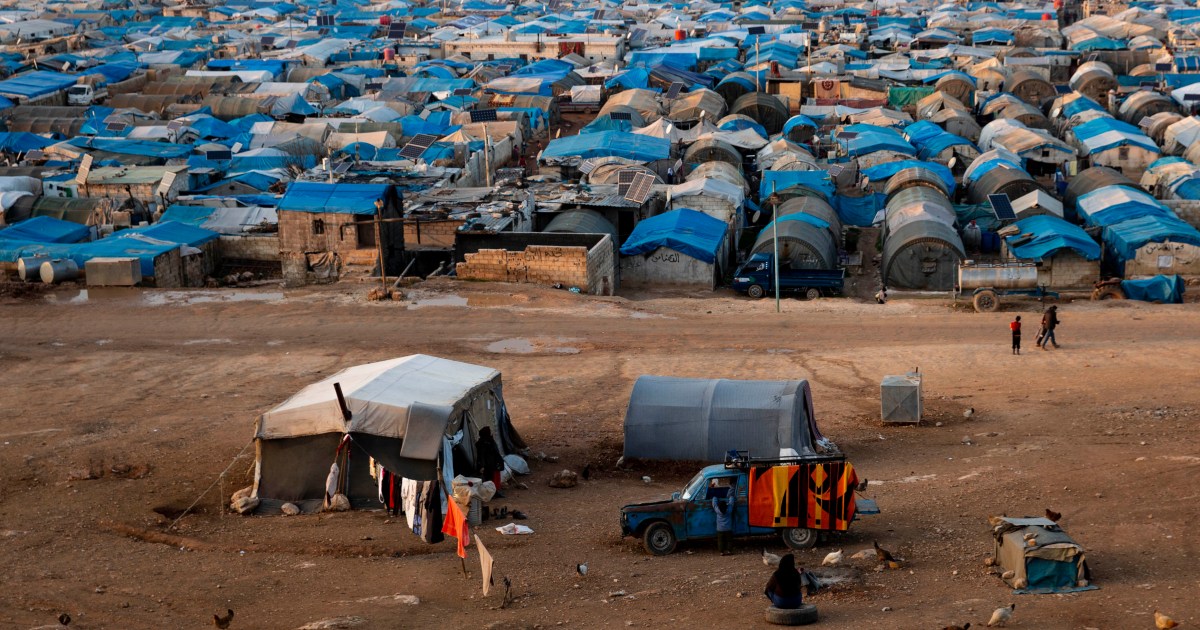
In recent decades, as risks of fragility, conflict, violence, climate change, and famine have soared, the number of people fleeing their homes and seeking refuge has risen to 27 million. By 2050, it is projected to quadruple. A significant share of current migrants—and an even larger share of future climate change refugees—will not return to their home countries. Previous refugee waves, set off by wars or episodes of state collapse, have proven harsh for asylum seekers, expensive for communities, and divisive politically. Images from the Mória refugee camp or the detention of small children are iconic in their portrayal of the broadly shared perception of the failures in current refugee hosting practices. Doubts that existing approaches to refugee integration could effectively accommodate the influx of potentially large numbers of future migrants have governments in receiving countries considering alternate refugee policies. The European Commission (2020), for instance, calls for a “new, durable European framework … that can provide … decent conditions for the men, women and children arriving in the EU … and … allow Europeans to trust that migration is managed in an effective and humane way, fully in line with our values.” Could charter cities hold the key to developing such a narrative that would benefit refugees and host communities alike?
Charter cities are new urban developments that have been granted special jurisdiction to create their own governance systems. Clearly defined legal frameworks, good governance, efficient distribution of public goods, and modern infrastructure could support well-functioning markets and attract investments to generate higher rates of economic growth in charter cities. Based on these principles, we propose to establish sustainable charter cities-in-exile (SCCEs) as a policy framework for host countries and international development organizations to promote refugees’ self-reliance and facilitate their integration. The proposal supplements existing migration policies, especially in areas of identified procedural and logistical bottlenecks, and supports refugees in their freedom of choice of migration destinations.
SCCEs seek to provide refugees with a place of safety, an immediately available assistance network, and an accelerated path towards professional and income opportunities. A guarantor country or group of countries would enforce the SCCE’s charter while guaranteeing the safety of private sector investments and firms, including those from the country of origin with temporary headquarters-in-exile. A proper institutional architecture guaranteed and monitored by national governments and international guarantors, with direct involvement of the refugees and local communities, would help to reduce the risks of crime, human rights abuses, and sexual exploitation.
The cities could be established in a state or province that agrees to free up land for urban development and/or rehabilitate and re-use depopulated towns. The SCCEs could be located near large cities to benefit from existing infrastructure or close to the border of the refugees’ country of origin as a transition hub for refugee flows. Streamlined regulations, low taxes, and expedited and simplified customs, combined with efficient urban infrastructure, would promote a productive business environment that, together with (skilled) refugee labor, could spur economic growth in the SCCEs. Multinational corporations might set up subsidiaries in SCCEs, to both earn profits and fulfill their global social corporate responsibilities. The employment opportunities and higher wages that workers command in SCCEs would attract refugees to relocate to these cities and would generate new economic opportunities for the local population. Residence in SCCEs would be fully voluntary, motivated by the social support provided and the economic opportunities offered.
The model would be based on a partnership among city developers, investors, host country governments, and international development organizations. The initial investments in setting up these cities would largely come from the funds that international organizations and host countries have allocated for refugee integration. These funds will be supplemented by the growing tax revenues from the businesses operating in the charter cities, with the eventual goal of reaching financial sustainability of the SCCEs.
Job opportunities and support requirements of refugees and work migrants differ sharply. Economic migrants are predominantly young, single individuals who settle in large urban areas. They are prepared to endure a period of hardship and often have the skills and connections to integrate quickly into the labor market. By contrast, refugees—such as the Ukrainians fleeing the war—comprise large shares of women, children, and the elderly, who need housing, access to health, childcare, and educational services. SCCEs could deliver specialized services to these groups of refugees, responding to their particular needs and facilitating their transition towards economic self-reliance.
The legal charters of SCCEs might grant refugees access to accelerated processes toward professional re-accreditation and—ad interim and based on their local qualifications—the right to work in their fields within the confines of the SCCE. Allowing skilled professionals to continue working in their occupations, within and later outside the SCCEs, would generate immediate welfare benefits, apart from the dignity given by the ability to serve compatriots in their respective areas of expertise. SCCE schools could be staffed by native-language teachers so that children would not lose several years of schooling and risk becoming a lost generation. Native-speaking doctors and nurses could treat their fellow citizens, including those affected by the war. Civil engineers could maintain the city’s infrastructure, and public officers could work in the city’s administration, distributing social assistance and helping to process immigration documents.
The development of a refugee-based civil society and informal safety nets within SCCEs would support efforts to prevent potential risks—including child labor and sexual exploitation—faced by marginalized immigrant groups with unclear integration perspectives, amplified when being ill-equipped to communicate effectively and orient themselves in foreign environments. For many refugees, the possibility of living among their compatriots and working in occupations where they are skilled could offer significant benefits over opportunities available elsewhere in the host country.
Neighboring communities need to be involved in decision-making processes from the outset in order to overcome the risks of resident populations objecting to the idea of a charter city in their vicinity. Geographically contained efforts aimed at helping host communities to benefit from externalities generated by SCCEs (such as the subsidized construction or rehabilitation of shared public infrastructure or the increase in the density of economic activities), combined with adequate compensation to displaced local populations, would help to reduce the risk of social and/or political tensions.
Rather than increasing competition over available jobs between local populations and incoming refugees, SCCEs would attract investments and create employment opportunities for residents of neighboring communities. While operating under their own charters, they will not be completely autonomous or sovereign but will be integrated into regional and national development plans. The links between the SCCEs and regional economies would grow over time, changing the perception about refugees who, rather than intensifying competition over low-paying jobs (particularly in economically lagging regions), would be seen as transforming an economic hinterland into an economic hub with benefits beyond the immediate goals of managing the influx of refugees. Consistent with overarching political objectives of delinking economic growth from carbon emissions, an SCCE could become standard-setting—a “test ground” and a “demonstration project” of a modern and environmentally-sustainable city.
As SCCEs evolve from centers of emergency assistance to self-sustained economic and humanitarian hubs, some refugees would gain experience and local knowledge and move out of the city to pursue their professional and life opportunities. At the same time, native citizens could find jobs and residences in and around SCCEs. Eventually, the SCCEs could fully integrate into the host country’s economy. Alternatively, SCCEs could become hubs for managing future waves of refugees, providing residents with social services, legal accreditation, professional training, and help them to integrate into recipient countries’ labor markets or facilitate their ability to contribute to their respective countries’ eventual reconstruction efforts.
The current refugee crises increase the urgency of developing a sustainable framework, potentially with SCCEs as a conceptual anchor. A pilot charter city could reduce pressure on the infrastructure and public services of cities struggling to absorb a sudden influx of a large number of refugees and serve as a testing ground to validate the feasibility and evaluate the costs of implementing SCCEs for potentially even larger waves of refugees in the near future.
The cost of building and maintaining the SCCEs could be high—but, in some situations, it will be lower than the total direct and indirect costs of decentralized refugee integration. The politico-economic advantages of an SCCE approach and its prospect of economic sustainability, especially if charter cities are used to accommodate several waves of refugees, could generate considerable returns on the initial investment by host countries’ taxpayers and the international development community.


